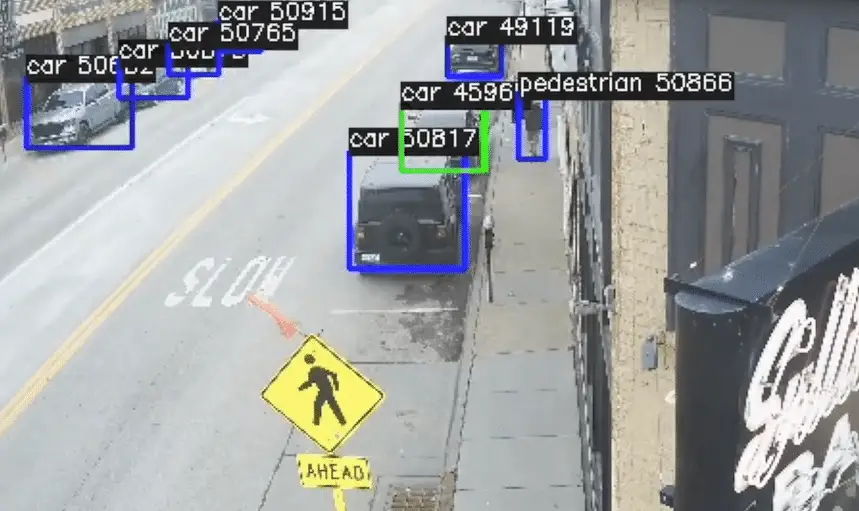
Introducing Real-Time Occupancy: The Latest Breakthrough from CurbSuite by Automotus
This post was originally published on this site Home /
Share:
Share:
Share:
In the vibrant and historic city of Lancaster, Pennsylvania, the Christian Street Parking Garage emerges as a beacon of innovative urban redevelopment. Spearheaded and funded by the Lancaster Parking Authority, designed by Walker Consultants, and project managed by Benchmark Construction, this $34 million project skillfully intertwines a multi-level parking structure with vital community spaces and direct bridge access to the adjoining building. It presents a holistic approach to urban renewal that integrates essential infrastructure.
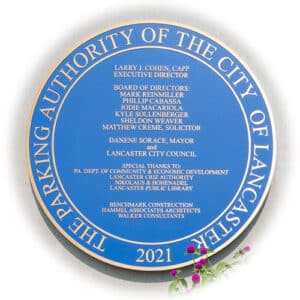
The facility offers nearly 360 parking spaces across seven levels built between two existing buildings, incorporating LED lighting, license plate recognition (LPR), and QR code parking access and revenue control (PARCS) to enhance user flexibility and efficiency. The transformative inclusion of the public library and retail space at street level morphs the parking garage from a mere stand-alone structure into a vibrant hub of community life. The library and retail space are strategically placed to not only serve residents and visitors but also significantly boost local businesses by increasing foot traffic, thereby weaving the fabric of the community tighter together with every interaction in an easily accessible and inviting space.
The project made significant architectural adaptations during construction, including splitting the block in half to allow pedestrian access through the site, thereby enhancing the flow and accessibility of the entire area. This thoughtful planning was crucial in maintaining the vitality of the surrounding area during the redevelopment phase. The pedestrian “tunnel” has plans for future community-based interactive art, another concept of innovative art incorporated into the project.
The new two-level, 40,000-square-foot public library is a central feature of Ewell Plaza, an area named after a famed local Olympian and public servant, offers vast resources for education and learning, and serves as a hub for community engagement. Including a child play center in parking authority retail space and city public bathrooms enhance the functionality and appeal of the space, ensuring it caters to families and individuals alike who may want to spend extended time in the space.
A vital element of the redevelopment is the coined “New Lancaster Rainbow” façade, designed by R&R Studios of Miami, Florida, known in part for their designs at the Coachella Arts and Music Festival. This public art installation consists of over 450 colorful up, light aluminum tubes, fabricated and then powder coated at two specialized firms in the Lancaster area, creating a dynamic visual interplay that animates the Ewell Plaza. Even in its infancy, it has even become a social media photo-op location!
The project champions sustainable urban development, supported by Pennsylvania’s City Revitalization and Improvement Zone (CRIZ) and its local authority, which is managed by the city economic development organization (Lancaster City Alliance).
Particularly noteworthy is the green roof atop the new event space, which is now structurally connected to a redeveloped former abandoned hotel that is now a Holiday Inn. This green roof enhances the building’s energy efficiency and contributes to the urban landscape’s aesthetic and environmental quality.
The plaza, designed by the city and its consultants with significant community input, is marked by new hardscaping, seating, and swings. It has been reimagined as a vibrant public space designed for events and relaxation. Beneath the hardscaped plaza is over a quarter mile of tubing for a water filtration system, keeping water runoff out of the water system as federally mandated and noted by winding yellow tubes that looked like a scene from a large water park, and now underneath the plaza.
Positioned beneath the colorful canopy, the Lancaster Public Library benefits immensely from the artistic façade, which announces its presence and warmly invites the community to engage with its vast resources. This union between art and utility underscores the library’s crucial role in fostering a well-educated and actively engaged community. Echoing global trends in library architecture, and designed by a local firm, Hammel Architects, Lancaster’s approach to the library’s design demonstrates that public buildings can embody both functionality and iconic design.
The Christian Street Parking Garage and Ewell Plaza are exemplary models for cities worldwide, artfully blending utility with spectacular public art to create engaging and functional spaces. It exemplifies how thoughtful urban planning and robust community involvement transform basic infrastructure into essential community assets. The project addresses the practical need for parking, enriches the community, promotes economic vitality, and enhances the urban landscape, offering a vibrant testament to Lancaster’s innovative approach to community-focused urban development.
For more details on the impact and design of this transformative project, residents and visitors are encouraged to visit the city of Lancaster’s website. Here, ongoing discussions and updates celebrate this landmark project’s role in shaping a vibrant and sustainable urban future, continuing to inspire and serve as a global blueprint for urban renewal projects. This ongoing commitment to integrating art, sustainability, and community service in urban design enhances the aesthetic and functional appeal of city spaces. It fosters a more profound connection among residents and a stronger sense of community pride and belonging—and it all started with parking! ◆
| February 3rd, 2022, through February 2nd, 20232 | ||||||
|---|---|---|---|---|---|---|
| EV-1 | EV-2 | EV-3 | EV-4 | Total | Description | |
| Odometer Sum (mi) | 14,701 | 3,854 | 14,608 | 12,954 | 46,117 | Sum of odometer |
| Charging Port Energy (kWh) | 40,886 | 14,547 | 40,009 | 39,834 | 135,276 | Charging energy measured at the Combined Charging System (Combined Charging System) port |
| Net Charging Energy (kWh) | 34,832 | 11,627 | 34,482 | 32,726 | 113,667 | Charging energy measured at the batteries |
| Cumulative Energy Consumption (kWh/mi) | 2.37 | 3.01 | 2.37 | 2.53 | 2.47 | Cumulative energy consumption rate when not plugged into a CCS port |
| Cumulative MPGe | 15.7 | 12.4 | 15.8 | 14.8 | 15.1 | Cumulative B20 diesel equivalent fuel economy when not plugged into a CCS port based on 37.037 kWh per diesel gallon |
*EV2 was out of service for repairs due to an accident in February 2022
Larry J. Cohen, CAPP, is the Executive Director of the Lancaster Parking Authority.

This post was originally published on this site Home /

Business intelligence & KPI’s for predictive digital parking operations.

HONK Brings Contactless Parking Payments to Bend, Oregon
BEND, OR

This post was originally published on this site Home /
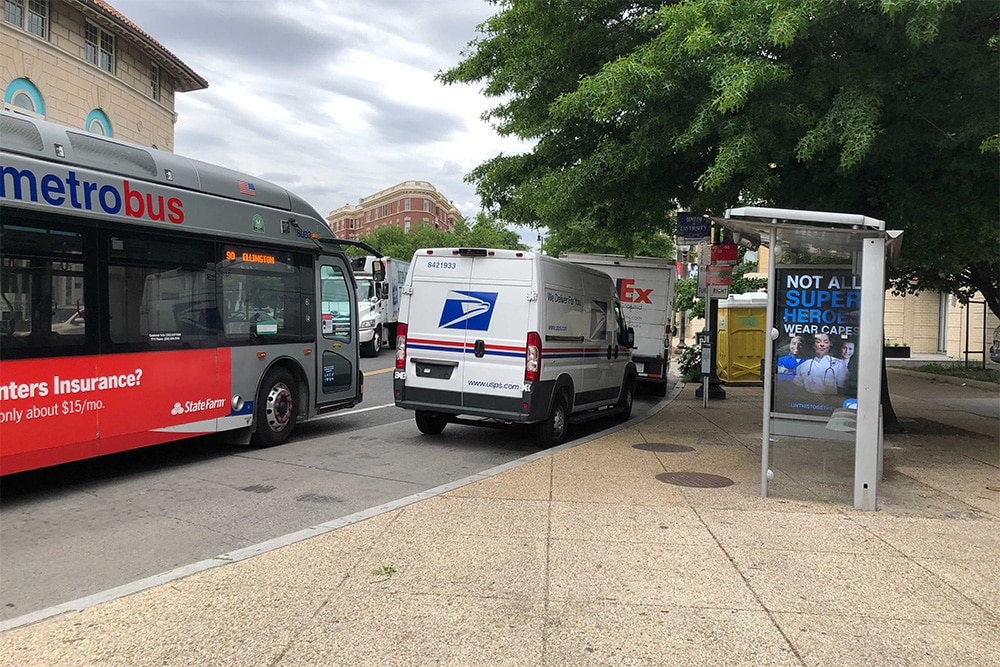
Leveraging Data and GPS for Curb and Mobility Management
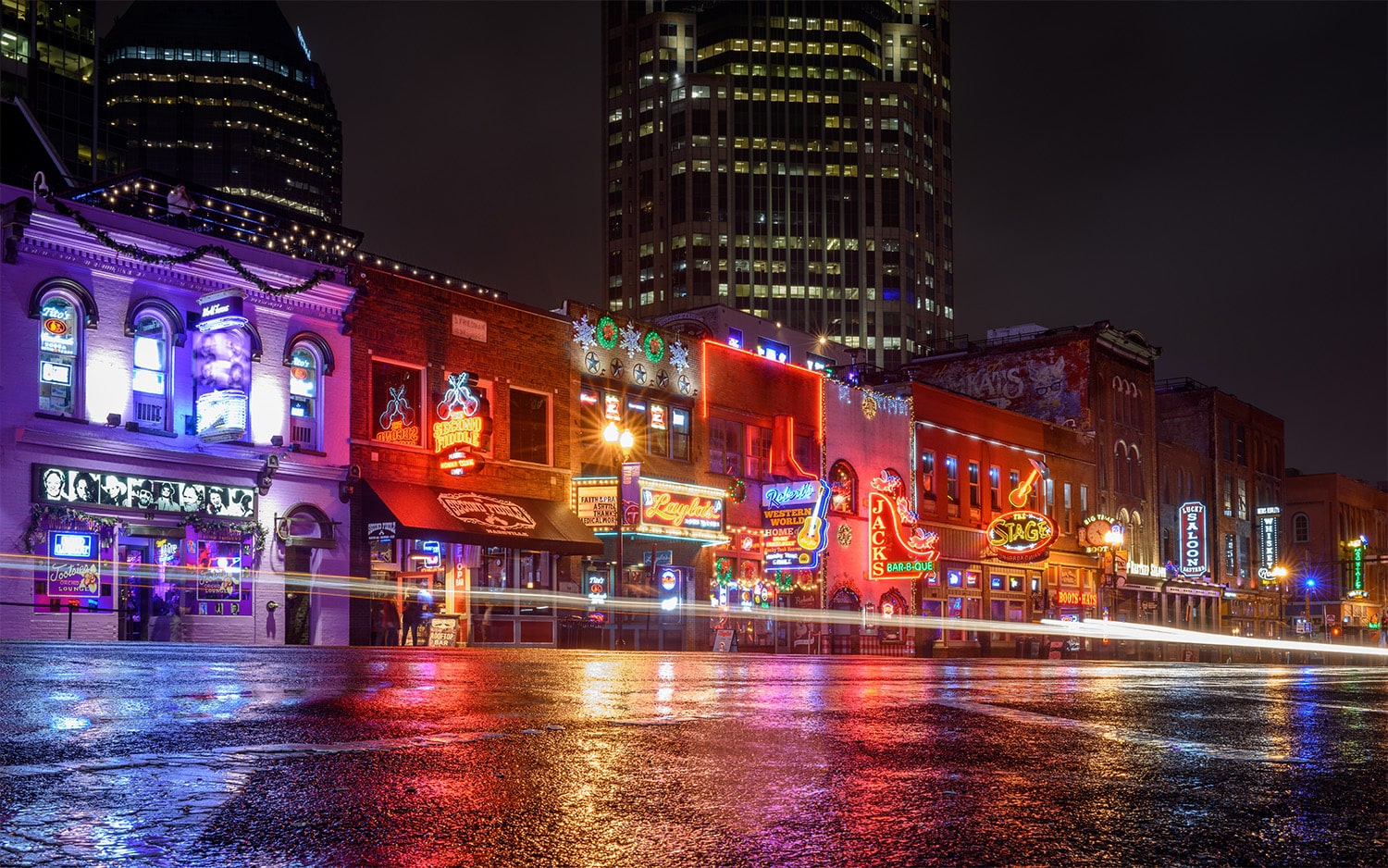
Nashville’s Pathway to Smarter Parking and Mobility Innovation
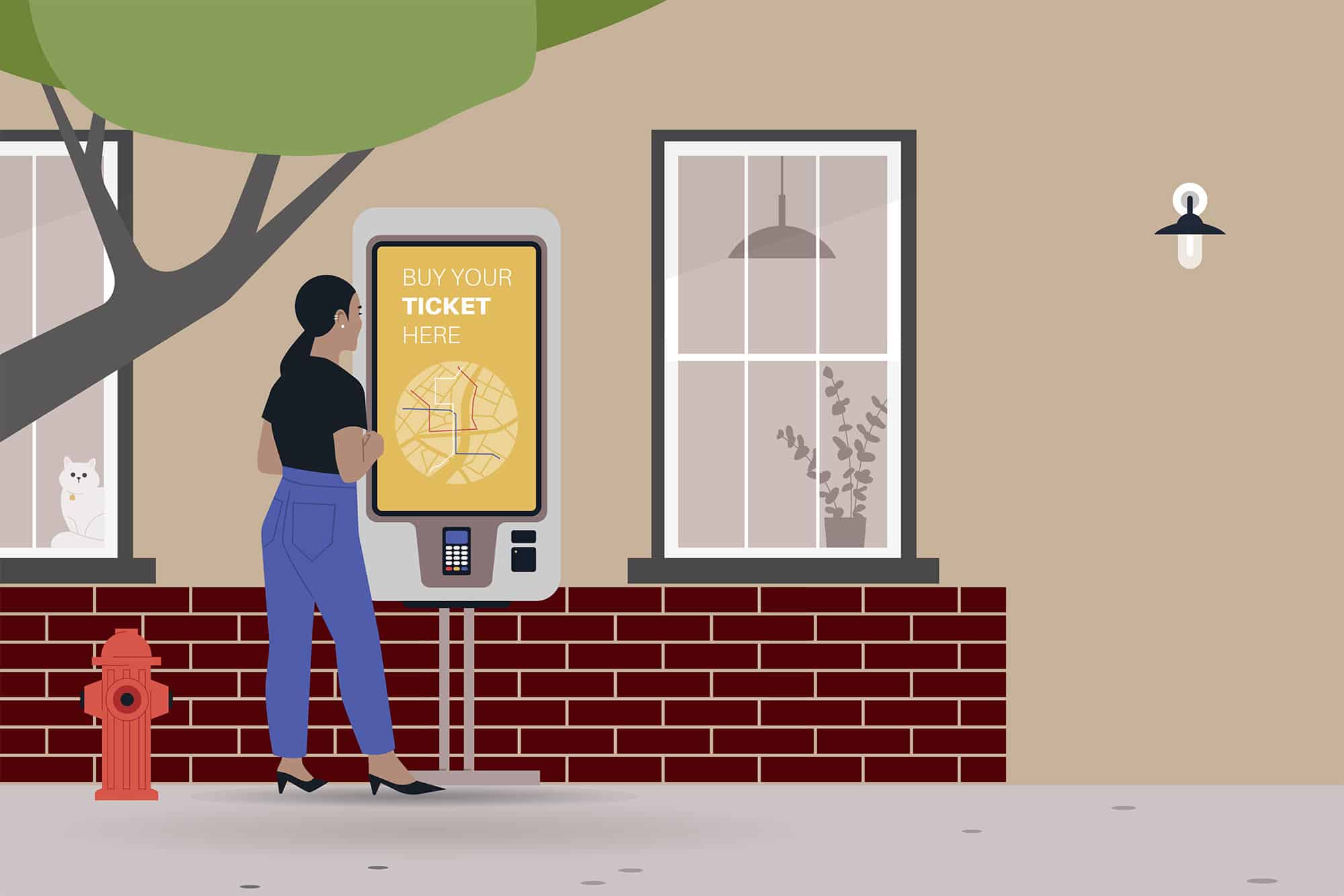
Self-Service Kiosks and the Democratization of Digital Services
Parking & Mobility is IPMI’s flagship publication, covering the news, trends, analysis, technologies, and people of the parking and mobility industry, and how it affects and influences communities around the world.
| Cookie | Duration | Description |
|---|---|---|
| cookielawinfo-checkbox-advertisement | 1 year | Set by the GDPR Cookie Consent plugin, this cookie is used to record the user consent for the cookies in the "Advertisement" category . |
| cookielawinfo-checkbox-analytics | 11 months | This cookie is set by GDPR Cookie Consent plugin. The cookie is used to store the user consent for the cookies in the category "Analytics". |
| cookielawinfo-checkbox-functional | 11 months | The cookie is set by GDPR cookie consent to record the user consent for the cookies in the category "Functional". |
| cookielawinfo-checkbox-necessary | 11 months | This cookie is set by GDPR Cookie Consent plugin. The cookies is used to store the user consent for the cookies in the category "Necessary". |
| cookielawinfo-checkbox-others | 11 months | This cookie is set by GDPR Cookie Consent plugin. The cookie is used to store the user consent for the cookies in the category "Other. |
| cookielawinfo-checkbox-performance | 11 months | This cookie is set by GDPR Cookie Consent plugin. The cookie is used to store the user consent for the cookies in the category "Performance". |
| CookieLawInfoConsent | 1 year | Records the default button state of the corresponding category & the status of CCPA. It works only in coordination with the primary cookie. |
| elementor | never | This cookie is used by the website's WordPress theme. It allows the website owner to implement or change the website's content in real-time. |
| viewed_cookie_policy | 11 months | The cookie is set by the GDPR Cookie Consent plugin and is used to store whether or not user has consented to the use of cookies. It does not store any personal data. |
| Cookie | Duration | Description |
|---|---|---|
| _ga | 2 years | The _ga cookie, installed by Google Analytics, calculates visitor, session and campaign data and also keeps track of site usage for the site's analytics report. The cookie stores information anonymously and assigns a randomly generated number to recognize unique visitors. |
| _ga_02PMHW8YWC | 2 years | This cookie is installed by Google Analytics. |
| _ga_LC0QJJHM3J | 2 years | This cookie is installed by Google Analytics. |
| _ga_V9KYTSBYT2 | 2 years | This cookie is installed by Google Analytics. |
| iutk | 5 months 27 days | This cookie is used by Issuu analytic system to gather information regarding visitor activity on Issuu products. |
| Cookie | Duration | Description |
|---|---|---|
| mc | 1 year 1 month | Quantserve sets the mc cookie to anonymously track user behaviour on the website. |
| Cookie | Duration | Description |
|---|---|---|
| ultp_view_1052 | 1 day | No description |
| ultp_view_1058 | 1 day | No description |
| ultp_view_1060 | 1 day | No description |
| ultp_view_1064 | 1 day | No description |
| ultp_view_1068 | 1 day | No description |
| ultp_view_1070 | 1 day | No description |
| ultp_view_1072 | 1 day | No description |
| ultp_view_1078 | 1 day | No description |
| ultp_view_1082 | 1 day | No description |
| ultp_view_1088 | 1 day | No description |
| ultp_view_1100 | 1 day | No description |
| ultp_view_1103 | 1 day | No description |
| ultp_view_1114 | 1 day | No description |
| ultp_view_1118 | 1 day | No description |
| ultp_view_1122 | 1 day | No description |
| ultp_view_1125 | 1 day | No description |
| ultp_view_1130 | 1 day | No description |
| ultp_view_1132 | 1 day | No description |
| ultp_view_1135 | 1 day | No description |
| ultp_view_1541 | 1 day | No description |
| ultp_view_1554 | 1 day | No description |
| ultp_view_1557 | 1 day | No description |
| ultp_view_1560 | 1 day | No description |
| ultp_view_1563 | 1 day | No description |
| ultp_view_1568 | 1 day | No description |
| ultp_view_1572 | 1 day | No description |
| ultp_view_1576 | 1 day | No description |
| ultp_view_1580 | 1 day | No description |
| ultp_view_2305 | 1 day | No description |
| ultp_view_2321 | 1 day | No description |
| ultp_view_2338 | 1 day | No description |
| ultp_view_2342 | 1 day | No description |
| ultp_view_259 | 1 day | No description |
| ultp_view_270 | 1 day | No description |
| ultp_view_275 | 1 day | No description |
| ultp_view_286 | 1 day | No description |
| ultp_view_3074 | 1 day | No description |
| ultp_view_3115 | 1 day | No description |
| ultp_view_3334 | 1 day | No description |
| ultp_view_3336 | 1 day | No description |
| ultp_view_3338 | 1 day | No description |
| ultp_view_3340 | 1 day | No description |
| ultp_view_3346 | 1 day | No description |
| ultp_view_3354 | 1 day | No description |
| ultp_view_3361 | 1 day | No description |
| ultp_view_3367 | 1 day | No description |
| ultp_view_365 | 1 day | No description |
| ultp_view_367 | 1 day | No description |
| ultp_view_38 | 1 day | No description |
| ultp_view_3846 | 1 day | No description |